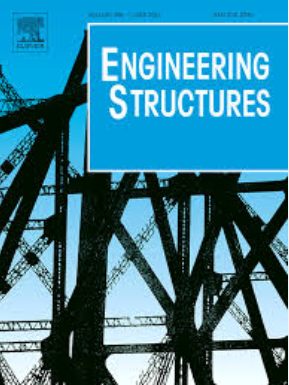A state-of-the-art review of bridges subjected to earthquake fault ruptures
IF 5.6
1区 工程技术
Q1 ENGINEERING, CIVIL
引用次数: 0
Abstract
With ongoing seismic activity worldwide and the rapid development of transportation infrastructure, an increasing number of bridge projects face the significant risk of crossing earthquake fault-rupture zones. Earthquake fault ruptures may lead to catastrophic damage to bridge structures that cross them. In particular, fault-crossing bridges can experience more complex responses, increased seismic demands, and greater damage potential compared to those exposed to conventional seismic actions, leading to significant casualties and economic losses. Therefore, it is imperative for engineers, researchers, and policymakers to understand the performance of bridges subjected to earthquake fault ruptures to ensure the design of reliable seismic-resistant bridges. This paper presents a comprehensive review of bridges subjected to fault ruptures. It begins with an overview of seismic damage to fault-crossing bridges in past earthquakes, followed by a discussion of the fundamental characteristics of near-fault and across-fault ground motions, including relevant simulation methods. Subsequently, the paper reviews theoretical analyses, experimental studies, and numerical simulations on fault-crossing bridges, and summarizes mitigation strategies against fault-crossing effects. Finally, the current state of research is assessed, and future research directions are outlined. This paper provides valuable insights into the impact of across-fault ground motions on bridge structures.
求助全文
约1分钟内获得全文
求助全文
来源期刊

Engineering Structures
工程技术-工程:土木
CiteScore
10.20
自引率
14.50%
发文量
1385
审稿时长
67 days
期刊介绍:
Engineering Structures provides a forum for a broad blend of scientific and technical papers to reflect the evolving needs of the structural engineering and structural mechanics communities. Particularly welcome are contributions dealing with applications of structural engineering and mechanics principles in all areas of technology. The journal aspires to a broad and integrated coverage of the effects of dynamic loadings and of the modelling techniques whereby the structural response to these loadings may be computed.
The scope of Engineering Structures encompasses, but is not restricted to, the following areas: infrastructure engineering; earthquake engineering; structure-fluid-soil interaction; wind engineering; fire engineering; blast engineering; structural reliability/stability; life assessment/integrity; structural health monitoring; multi-hazard engineering; structural dynamics; optimization; expert systems; experimental modelling; performance-based design; multiscale analysis; value engineering.
Topics of interest include: tall buildings; innovative structures; environmentally responsive structures; bridges; stadiums; commercial and public buildings; transmission towers; television and telecommunication masts; foldable structures; cooling towers; plates and shells; suspension structures; protective structures; smart structures; nuclear reactors; dams; pressure vessels; pipelines; tunnels.
Engineering Structures also publishes review articles, short communications and discussions, book reviews, and a diary on international events related to any aspect of structural engineering.
 求助内容:
求助内容: 应助结果提醒方式:
应助结果提醒方式:


